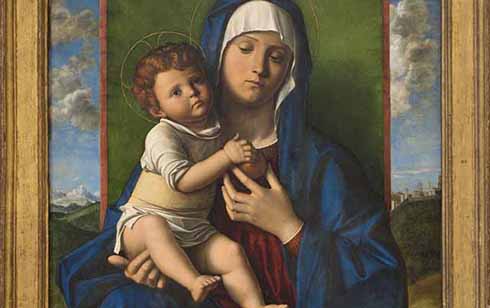 During the Second World War, the National Gallery in London was closed and priceless paintings were sent into hiding in safe places, including mine shafts and caves in Wales. There was an outcry. Of course, food and shelter come first. But people need beauty as well. They also need images to stimulate their minds and something to think about other than their present anxiety.
During the Second World War, the National Gallery in London was closed and priceless paintings were sent into hiding in safe places, including mine shafts and caves in Wales. There was an outcry. Of course, food and shelter come first. But people need beauty as well. They also need images to stimulate their minds and something to think about other than their present anxiety.
During the siege of Leningrad, a truly horrific episode, it is said that people survived two and a half years of suffering because the authorities kept the libraries open. They had little to eat, but books could help by feeding another part of their humanity.
Eventually, those in charge in London agreed that they would exhibit one painting at a time, bringing each single work 250 miles by train. One of the first was Noli me tangere by Titian, a famous picture of the tender moment when Mary Magdalene recognises Jesus in the garden after he rose from the dead. He tells her not to hang onto him. Noli me tangere means ‘don’t touch me’. Instead, Jesus asks Mary to ‘go and tell the brothers’, to become the apostle to the apostles. It is an image of strength, hope and vitality. More than 24,000 people queued in bad weather to see this one picture. Around them, houses and offices lay in ruins.
CONTEMPLATIVE PAINTING
Almost as popular was Giovanni Bellini’s image of the Virgin and Child, painted around 1490, the time that St Ignatius was born. Bellini, who came from Venice, was a career artist, one of the first to master the use of oil paints. The result of this was that his work was more humanly subtle and realistic than that of previous generations. It was also more contemplative. Oil paint allows an artist to work more slowly and to blend a wider range of colours. As a result, Bellini’s art was more serene. His religious figures project an aura of gentleness and calm, rather than being shallow expressions of commonplace piety.
Perhaps this is what intoxicated the struggling population of London. Many children had been killed during air raids, just as they continue to die in many wars around the world today. There is an obvious connection between the mother and child in this picture which surely touched the hearts of onlookers.
The painting also conveys a sense of threat, of the fragility of life. There is a parapet in front of both Mary and Jesus, which seems to keep them a safe distance from the trouble of the world. There is also a screen blocking out some of the landscape behind. Bellini often incorporated beautiful aspects of the natural world into his work. On this occasion, it is curtained off. It conveys a sense that the world might be a place of threat and is better kept at arm’s length. What matters is the tender bond between mother and child. They are sad but they are together. It is the ideal image for people living under threat to look at for real comfort, as opposed to cheap sympathy. It suggests that love can pay a heavy price.
RESURRECTION SYMBOL
Mary is holding a pomegranate. Those who enjoy fruit will know that cutting into a pomegranate often releases a surprise. The outside has a muted hue and a delicate texture. But the inside is brimming with colour and life. The seeds are almost fluorescent which is why they often adorn salads. In ancient cultures, the pomegranate has often been a symbol of fertility. In Christian art, it has often been a symbol of the Resurrection and life unending.
In the painting, Jesus looks at us nervously, uncertain of what may be coming. His mother holds a piece of fruit that reminds viewer that there will be new life after pain.
It takes a special kind of focus to visit an art gallery and look at just a single work. Perhaps when we visit someone’s house, we are more likely to spend time with just one painting that our friends might have on the wall. It is a different experience, allowing us to sink more deeply into what the artist is trying to convey. An art gallery can be overwhelming, a bit like visiting six countries in a fortnight.
SUBTLE FLAVOURS OF GOD
Ignatius of Loyola lived in the time of Bellini. He was wary of overstimulation, of loading up so many experiences that we don’t fully appreciate any of them. He is famous for saying we can find God in all things, but this is not to say we need all things to find God. Indeed, a few may serve us better by sharpening our taste, making us alive to all the subtle flavours of God which can be dulled by excess. He begins his spiritual exercises by saying ‘it is not knowing much that contents and satisfies the soul, but relishing things interiorly.’ This is advice to move gently and mindfully through life. The wartime patrons of the National Gallery appreciated a single resonant image. In a troubled world, we might all pray for the same ability to pause and focus our attention on the gifts of God.